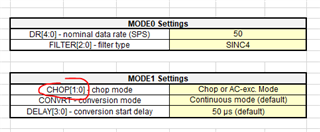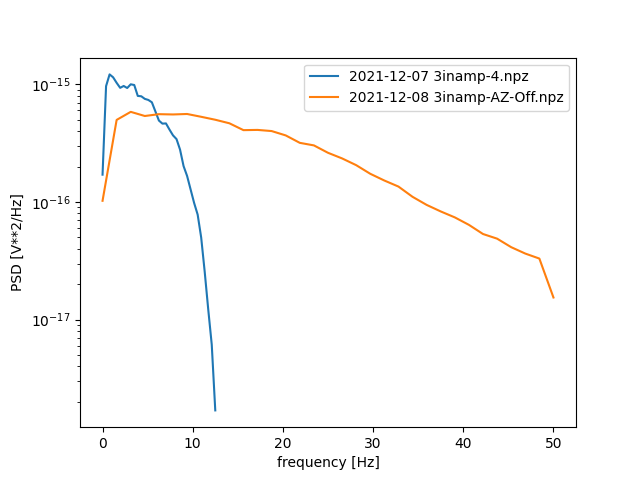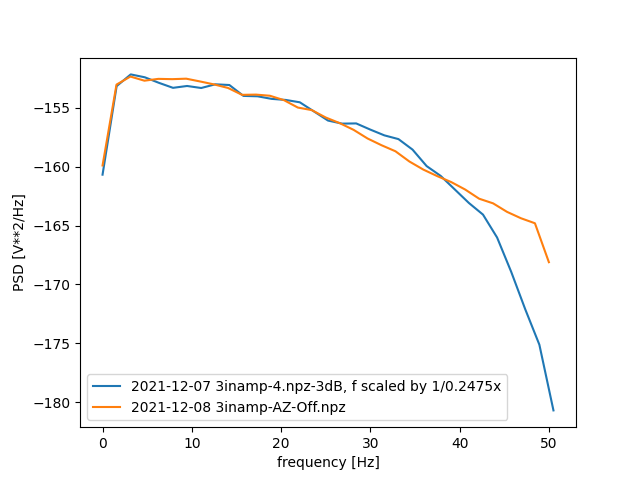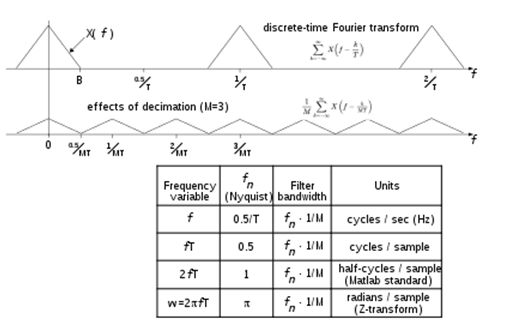How does the Auto-Zero function affect the effective noise bandwidth?
Section 9.4.2 Auto-Zero Mode describes that the digital filter notches remain in the same locations, but the system has latency equal to the Conversion Latency Time.
If I were using SINC4 at 50SPS, Table 5 shows I would have a bandwidth of 11.4Hz. But in Auto-Zero Mode, I would have a sample rate of 1/(80.43ms) = 12.4Hz.
Will the noise bandwidth remain unchanged, and will I get noise aliasing from out to 12Hz? If the noise is reduced, I might expect the response to be a convolution of a 2 element boxcar filter response with the SINC filter response.
The design calculator has a bit for MODE1 labeled CHOP 2 bits wide. Does this refer to the Auto-Zero mode? And some other undocumented mode?, this seems is only used to calculate the Conversiontime in the sheet, not any filter paramaters.





